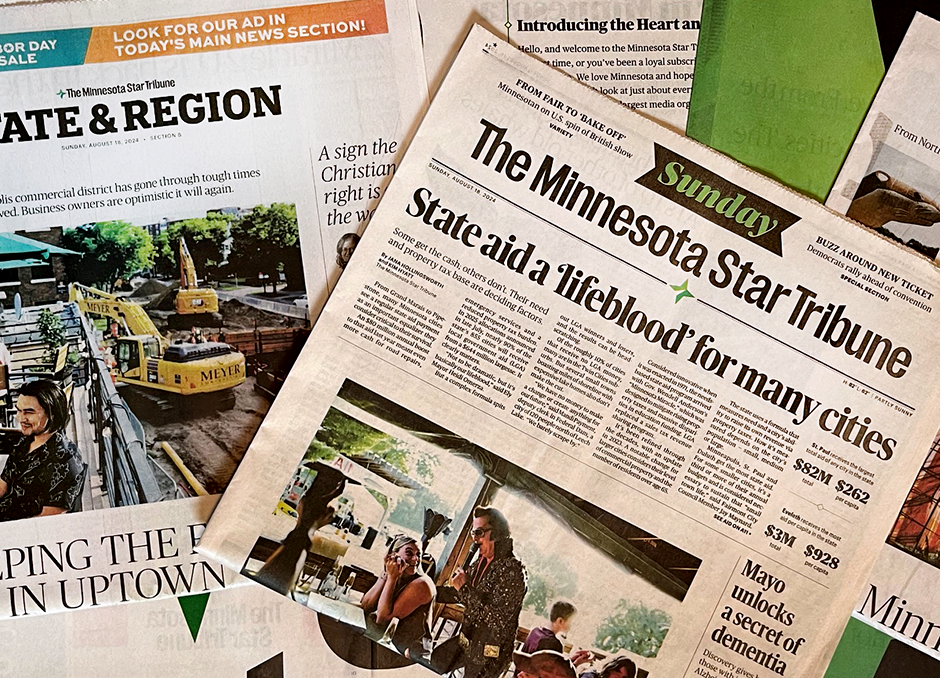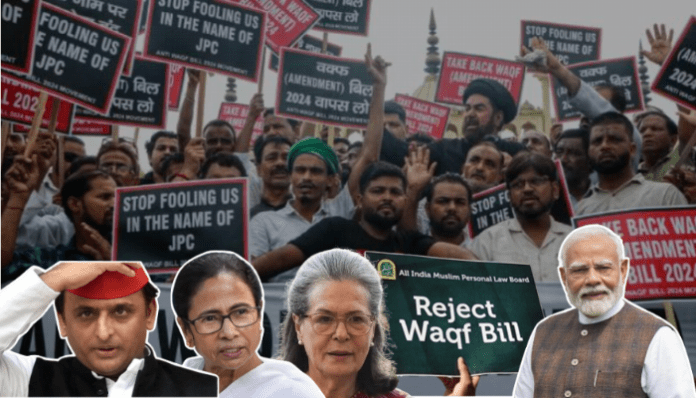The Waqf Amendment Bill has been passed in the Lok Sabha and the Rajya Sabha on 2nd and 4th April, respectively. It seeks to improve the management of Waqf properties while incorporating measures to protect heritage sites and foster social welfare. This legislation is designed to streamline governance by increasing transparency in property management, facilitating better coordination between Waqf Boards and local authorities as well as safeguarding the rights of stakeholders.
The bill was reintroduced in the lower house by Kiren Rijiju, the Union Minister for Minority Affairs. He initially presented it in August last year, after which it was sent to a Joint Parliamentary Committee (JPC), headed by Bharatiya Janata Party (BJP) MP Jagdambika Pal for extensive examination. On 27th February, the JPC approved 14 amendments proposed by the members of parliament.
The JPC also launched a comprehensive public outreach campaign. According to reports, the committee received an astonishing 97,27,772 memoranda from both citizens and organizations. These consultations featured significant Muslim organizations such as Darul Uloom Deoband, Jamiat Ulama-i-Hind and different Jamaat factions, covering 10 cities across India. During these interactions, the committee met with 25 State Waqf Boards, local civil society groups and legal experts.
The report submitted by the house panel on 13th February received approval from the union cabinet on 19th February. The bill is poised to be enacted into law in the midst of uproar, misinformation, propaganda and threats from both opposition parties and Muslim leaders along with their ecosystem who are desparate to paint the development as “anti-Muslim” and “against the Constitution” for vote bank politics.
While certain groups are alleging discrimination, the Waqf maintains control over an extraordinary expanse of land across India, along with absurd claims over private and public properties as well as Hindu temples. Furthermore, in various foreign nations, including several Muslim-majority countries, the Waqf is subject to various legal regulations and degrees of government involvement. Consequently, the situation in India is neither rare nor novel, nor does it contravene the rights of any citizen under the Constitution and the following list of countries confirms the same.
How Waqf laws are amended, abolished or brought under government control: Saudi Arabia
A Council of Ministers resolution in 2010 created the General Authority for Awqaf (GAA), a government agency with autonomous legal and financial standing. Its objectives are to manage, conserve, develop and improve endowments in the Kingdom of Saudi Arabia. It has a direct organizational association with the Prime Minister. This is to meet the requirements of the endowers and strengthen their contribution to social and economic advancement and solidarity in line with the goals of Islamic (Sharia) law.
The country’s endowment sector has gone through multiple phases of development and oversight. It commenced in 1961 with the founding of the Ministry of Hajj and Endowments after which the Supreme Council of Endowments Law in 1966 was enacted, followed by In the Charitable Endowment Act in 1973. The Ministry of Islamic Affairs, Endowments, Dawah and Guidance then took over endowment management in 1993 which lasted until 2010, when the Council of Ministers resolved to create the General Authority for Awqaf. The law was adopted on 9th December 2015.
The main tenet of the General Authority for Awqaf’s strategy is to serve as the endowment sector’s enabler and a platform for the realization of Saudi Vision 2030. Furthermore, the General Authority for Awqaf is in charge of overseeing, cataloging, registering and maintaining endowments in addition to carrying out associated tasks that support their growth in compliance with the guidelines established by the donors. The General Authority for Awqaf uses five pillars to execute out its strategy including:
- Establishing the governance and regulations for the endowment sector, accomplishing a multiple goals such as issuing guidelines for endowment administration, reporting unidentified endowments, building endowment investment portfolios and handling infractions.
- Directing banks to projects and activities that benefit the community, where the authority has set up many portfolios to address the requirements of the developing community.
- Advancing the endowment industry with the goal of increasing understanding of its significance for social and economic advancement as well as the endowment workplace.
- Increasing its financial resources by diversifying its sources of income through projects and programs meant to achieve growth and financial sustainability.
- Building institutional capacities for the authority and developing the creation of an internal governance framework are two ways to improve institutional excellence.
The Awqaf Investment Company was established by the General Authority for Awqaf to act as the authority’s investment division. It was founded as a closed joint-stock business that helps endowments grow, improves the effectiveness of their investments, and guarantees consistent returns.
The Awqaf Riyadah Center was set up by the General Authority for Awqaf, which has developed the endowment sector’s components. The center’s objective is to strengthen the endowment sector by enhancing its knowledge and research capabilities, increasing developmental impact, and improving the elements of endowment regulation through advancements in research, comprehensive data sets, and innovative solutions.
Singapore streamlines Wakafs
A wakaf, as defined by section 2 of the Administration of Muslim Law Act 1966, is a permanent dedication by a Muslim of any movable or immovable property for any purpose recognized by Muslim law as pious, religious or benevolent, in accordance with Singaporean law.
A wakaf consists of a donor (the wakif) who hand overs his possessions (mauquf) via declaration (sighah). A mutawalli or trustee is then chosen to oversee the property. The capital, or the initial asset or assets, must be preserved by the trustee. The beneficiaries (muquf’alaih) only receive the revenue produced by the asset or assets. Each wakaf needs to register with Majlis Ugama Islam Singapura (MUIS), which is also in charge of keeping their record. It will gather the following details, among others, for registration reasons.
- Complete details, including contact information, of the trustees.
- A comprehensive list of beneficiaries (or categories of beneficiaries) and the purposes of the wakaf.
- A detailed description of the wakaf properties that allows for their identification.
- The total annual income generated from the wakaf properties.
- The annual rates and taxes owed for the wakaf properties.
- An estimation of the yearly expenses associated with generating income from the wakaf properties.
- The funds allocated under the wakaf are designated for: (i) the compensation of the trustee and allowances for individuals, exclusively religious activities, charitable initiatives and pious endeavors and other related purposes.
All of Singapore’s wakafs are in the care of MUIS which also has broad authority over them all. For example, a person cannot be designated as a trustee under an instrument or declaration forming a wakaf until they have received previous written approval from MUIS. The trustees could be subject to terms and restrictions from MUIS regarding their appointment during this procedure.
Additionally, after every fiscal year ends, the trustee is required to prepare financial statements for the wakaf and maintain accurate accounts and records of its activities. It is necessary to submit these financial accounts to MUIS.
The police have the authority to request that MUIS provide information related to the wakaf, as stipulated by the Criminal Procedure Code 2010, if they deem such information essential for any investigation, inquiry, trial or other legal proceedings under the CPC.
Anti-Waqf sentiment in Turkish Republic
The waqfs faced hostility from the Turkish Republic’s leaders. The primary focus of this animosity was Islamic brotherhoods, but waqfs were also targeted by the because it was charged that they funded the former. The removal of the waqfs was one of the biggest promises offered by multiple parliamentary candidates in the general elections of 1931. Furthermore, all of this was consistent with the party’s doctrine. A 1939 article noted that this massive sale of waqf estates was consistent with the Peoples’ Party’s “for the people” slogan.
The Committee for the Abolishment of the Waqfs was established in 1937. Once it was understood that a significant portion of the waqf properties could be claimed, the ministries, particularly the Ministry of Education and the Ministry of Interior, started to vie for these assets. Educational institutions affiliated with mosques could be claimed by government agencies. If the waqfs wished to benefit from the rental income of these properties, they were required to pay the local authorities the market value as assessed. This regulation initially facilitated the confiscation of waqf properties without compensation, subsequently allowing the original owners to repurchase their long-held assets at market rates.
The declaration that the Ministry of Finance would be responsible for collecting waqf revenues was a critical step toward eliminating the financial autonomy of the Waqfs. The Tanzimat era (1830s) witnessed this move, which left the Waqfs entirely at the Ministry of Finance’s mercy financially. The Ministry of Education receives the revenues and assets from all education-related waqfs. In 1954, a significant republican decision led to the abolition of all cash waqfs, and the confiscated capital was utilized to fund the Bank of the Awqaf.
Previously, Law 429 on the Abolition of the Ministries of Waqfs and Islamic Law and Military Affairs disbanded the Ministry of Waqfs and Islamic Law on 3rd March 1924. When the Civil Code was passed in October 1926, the term “Waqf” was changed to “Foundation.” The Ministry of Education took control of waqf schools and madrasas, while waqf water sources were assigned to local authorities or municipalities. Furthermore, waqf cemeteries were designated to municipalities, waqf forests were appropriated by the Ministry of Forests, dervish lodges were closed and other waqf assets were entirely dissolved.
Waqfs developed after the republic’s declaration were primarily focused on education, culture, health, and social welfare. Examining, updating, and managing the waqfs that were left over from the Ottoman Empire was considered a key objective in the early republican era. In 1929, Swiss law professor Hans Leemann was asked to draft a waqfs regulation to achieve this goal which was later imposed as Waqf Code 2762 on 5th June 1935.
The General Directorate is currently in charge of managing, restoring and using Waqf properties. Additionally, it guarantees that Waqf funds are allocated to public welfare initiatives. The country underwent considerable revisions to conform to secular norms.
Waqf’s ministry under the control of Parliament in Egypt
The Ministry of Waqf, responsible for Islamic endowments in Egypt, came under the direct authority of the Egyptian parliament in 1924. Earlier, Muhammad Ali’s policies regarding waqfs in the initial phase of his rule (1805 to 1848) were designed to improve his control over land tenure and tax collection. At the time, he did not seek to infringe upon waqfs that originated from the private property of their founders.
Instead, he targeted waqfs with dubious legal status, especially those consisting of endowed fertile land that had originally been part of the state’s holdings. The uncertain legal status of these waqfs allowed the ruler to reclaim the land. In this regard, Muhammad Ali emulated the actions of those who came before him. He mandated that the holders of land waqfs demonstrate their ownership, following the declaration of state ownership over land properties.
Another initiative by Muhammad Ali regarding this issue was carried out during the cadastral survey conducted between 1812 and 1814, which was approached in a similar manner. In 1812, his son, Ibrahim Basha, mandated a survey of all waqfs allocated for “mosques, piety, and charity,” imposing a tax amounting to half of the standard land tax on these properties. Later, in 1814, the owners were required to validate the origins of their properties. If any land beyond what was recorded in the title deed was identified, that surplus would revert to state ownership.
The land’s initial area was recorded under the name of its founder, its real owner and cultivator. All waqf lands were subject to standard taxation, with the exception of those whose owners could present new title deeds issued during the “White Days” (13th, 14th, and 15th days of each month in the Islamic calendar) and thereafter. In these instances, only half of the tax was necessary.
Modern Waqf system in Lebanon
The management of Waqf properties has undergone significant changes due to numerous legal reforms, especially during the Ottoman era and the French Mandate. Consequently, these properties are now administered by the Directorate General of Islamic Waqf, under the Ministry of Endowments and Islamic Affairs. Meanwhile, Dar Al-Fatwa supervises religious and endowment matters, which encompass endowments, mosques, zakat, and charitable activities.
The ministry has to oversee the administration of Waqf properties, guaranteeing their appropriate utilization, and supervising the allocation of Waqf revenues for philanthropic endeavors as initiatives are underway to modernize Waqf management by implementing digital solutions and enhancing transparency and efficiency.
Muslims formed family waqfs to allocate the income generated from their assets to their relatives. Should the family become extinct, these funds typically revert to assist the impoverished. However, a discussion regarding the elimination of family waqfs began in the Levant and Egypt in the early 1900s. The first decade of the twentieth century saw the beginning of the discussion about abolishing family waqfs in Egypt and the Levant. In Lebanon and Syria, which fell under French Mandate following the collapse of the Ottoman Empire, the debate was sparked by a proposal from the Director of the Waqf Directorate aimed at abolishing family waqfs.
The push to do away with the family waqf was a recurring theme in the contemporary discourse of progress and evolution. Appeals for betterment and enlightenment always came before demands to reform waqf. Improvements for property such as the waqf took the form of proposals to “free” its movement from what were viewed as antiquated restraints.
Professionalised Waqf in Oman
The Omani Waqf Establishment was launched to professionalize waqf practices, and the Ministry of Endowments and Religious Affairs (MERA), also called the Ministry of Awqaf and Religious Affairs (MARA), is in charge of managing and supervising all issues pertaining to waqf (endowment) properties and religious affairs in Oman. The first mosque in Oman, the Al-Midmar Mosque, was constructed in about 627 A.D. by Mazin bin Ghadouba, a disciple of the prophet Muhammad.
Waqf was restricted to constructing and remodeling mosques at the period. Later, Omani people expanded its scope to include aiding the underprivileged and other philanthropic endeavors. In Oman, there are currently more than thirteen different kinds of waqf, including those for grave care, education, mosques and Quran schools. Imams were in charge of awqaf until recently. An organization devoted to the administration of awqaf was founded in 1950 by Sultan Said Bin Taimur. The entity changed its name to the Ministry of Awqaf and Religious Affairs in 1997.
Ministry of Islamic Affairs controls Waqfs in Kuwait
The management of Waqf properties in Kuwait falls under the jurisdiction of the Ministry of Awqaf and Islamic Affairs. However, the regulation governing the Ministry of Awqaf and Islamic Affairs was amended by the government. It was renamed the Ministry of Islamic Affairs. Waqfs have been instrumental in providing support for religious, educational and social services in the country. The ministry is dedicated to the development and is tasked to lookafter Waqf assets, which encompass mosques, educational institutions, and healthcare facilities. To ensure its relevance in 2024, the ministry is also focused on modernizing Waqf management through digital initiatives aimed at enhancing transparency and efficiency.
Habib Bourguib abolished Waqfs
After gaining independence in March 1956, Habib Bourguiba’s efforts to build the Tunisian state involved implementing reforms that abolished the Bey institutional and legal system. He eliminated the religious courts, abolishing Sharia in 1956 and rabbinical courts in 1957. On 13th August 1956, he enforced the Code of Personal Status (CSP), which officially severed ties with conventional Muslim legal practices. Furthermore, in May and July of 1957, he dismantled habous (mortmain properties), some of which had been designated for charitable or religious purposes. Ultimately, the Zaytuna mosque-university, one of the primary hubs of Islamic education in the Maghreb, was disbanded by the decrees of 29th March 1956 and 1st October 1958.
Separate Waqf boards in Iraq
The Sunni Endowment Office and the Shiite Endowment Office, which were founded following Saddam Hussein’s overthrow in 2003, are in charge of monitoring Waqf in Iraq. Their management is centralized, and Sunni and Shiite endowments have their own offices. Iraq’s Waqf administration is split along sectarian lines (Sunni and Shiite).
Waqf under federal agency in UAE
The General Authority of Islamic Affairs and Endowments, sometimes referred to as Awqaf is in charge of waqf properties and federal laws regulate the waqf system in the United Arab Emirates. Waqf holdings, which are religious endowments under Islamic law, are governed by the body which is a federal organization in the country.
Centralised Waqfs in Syria
The Ministry of Awqaf in Syria is charged with the oversight of Waqf properties, ensuring they are utilized correctly and that the revenues derived from them are distributed for charitable purposes. The management of Waqf is centralized under this ministry.
Similar measures in other countries
The French acquired control of the habous (Islamic endowment) in Algiers and Morocco in 1830. In other regions, the government the government tightened its control regulations. Waqfs, which had been in Muslim areas of Russia for centuries, were seized and deemed state property during the revolution.
Muslim populations in various European nations, like France, Germany and the United Kingdom, own religious properties, although they are not officially recognized as “Waqf Boards.” The majority of holdings are registered under the names of Islamic Foundations or Muslim Charity Trusts.
In his work “Outlines of Muhammadan Law,” Professor Asaf A.A. Fyzee provides insight on the advancements regarding waqf in many nations and wrote, “The importance of the institution will be better understood if we take into consideration the enormous extent of waqf/land or, the possessions of the Dead Hand, in the various countries of Islam. In the Turkey of 1925, three-fourths of the arable land, estimated at 50,000,000 Turkish pounds, was endowed as waqf.”
“At the end of the 19th century, one-half of the cultivable land in Algiers was dedicated. Similarly, in Tunis one-third and in Egypt one-eighth, of the cultivated soil was ‘in the ownership of God’. But it was already realised by the beginning of the 20th century, first by France and later in Turkey and Egypt, that the institution of waqf was in some respects a challenge to the natural growth and development of the national economy,” he added.
He further conveyed, “We must consider briefly the advantages and disadvantages of the institution. The religious motive of waqf is the origin of the legal fiction that waqf property belongs to Almighty God; the economic ruin that it brings about is indicated by the significant phrase The Dead Hand.’ Waqf to some extent ameliorates poverty, but it has also (another) side. When a father provides a certain income for his children and descendants, the impulse to seek education and the initiative to improve their lot gradually decrease.”
Fyzee then noted, “Charitable aid often keeps people away from industry, and lethargy breeds degeneration. Furthermore, some people who desire fame by making foundations and endowments obtain property by shady means, amounting even to extortion and exploitation. Agricultural land deteriorates in the course of time; no one is concerned with keeping it in good trim; the yield lessens, and even perpetual leases come to be recognised. In India, instances of the mismanagement of waqfs and of the destruction of waqf have often reached the courts.”
Conclusion
The introduction of the Waqf concept in India reportedly occurred during the Delhi Sultanate, with its development peaking during the rule of Firoz Shah Tughlaq. Nevertheless, it was after India’s Independence that its extensive powers were established through various legislative actions by Parliament. In 2013, just a year before Prime Minister Narendra Modi came to power, the Congress-led UPA (United Progressive Alliance) government enacted the Waqf (Amendment) Act, which conferred sweeping powers upon the Waqf Board.
Notably, the Waqf Act, established in 1955, was designed to oversee the management of Waqf properties and guarantee their appropriate use for their intended purposes. However, both the original act and its 2013 amendment have proven ineffective, resulting in problems such as unlawful land occupation, mismanagement, disputes over ownership, delays in registration and surveys and an increase in litigation and complaints.
The Waqf Inquiry Committee’s suggestions were incorporated into the Waqf (Amendment) Act, 1984, marking the sole attempt to modernize India’s Waqf system. Among other things, it allowed for the creation of Waqf Tribunals, the reconstitution of Waqf Boards with new powers, the appointment of many committees and appointments as well as the expansion of the authority of the Waqf commissioners. However, political realities and strong opposition prevented modernization from happening.
According to government data, Waqf Boards oversee 870,000 properties covering an area of 940,000 acres throughout India, with an estimated worth of ₹1.2 lakh crores. India holds the distinction of having the largest waqf holdings globally. Additionally, the Waqf Board ranks as the largest landowner in India, following the Armed Forces and the Indian Railways. The Waqf Board has recorded a total of 872,328 immovable properties and 16,713 movable properties.
Additionally, there are 356,051 Waqf Estates registered with the board. The inability to appeal Waqf tribunal decisions in higher courts hinders transparency and accountability within its management. Therefore, addressing the glaring injustices became a pressing necessity for the central government. This crucial advancement is expected to help resolve the longstanding challenges, despite the bogus propaganda.

















































